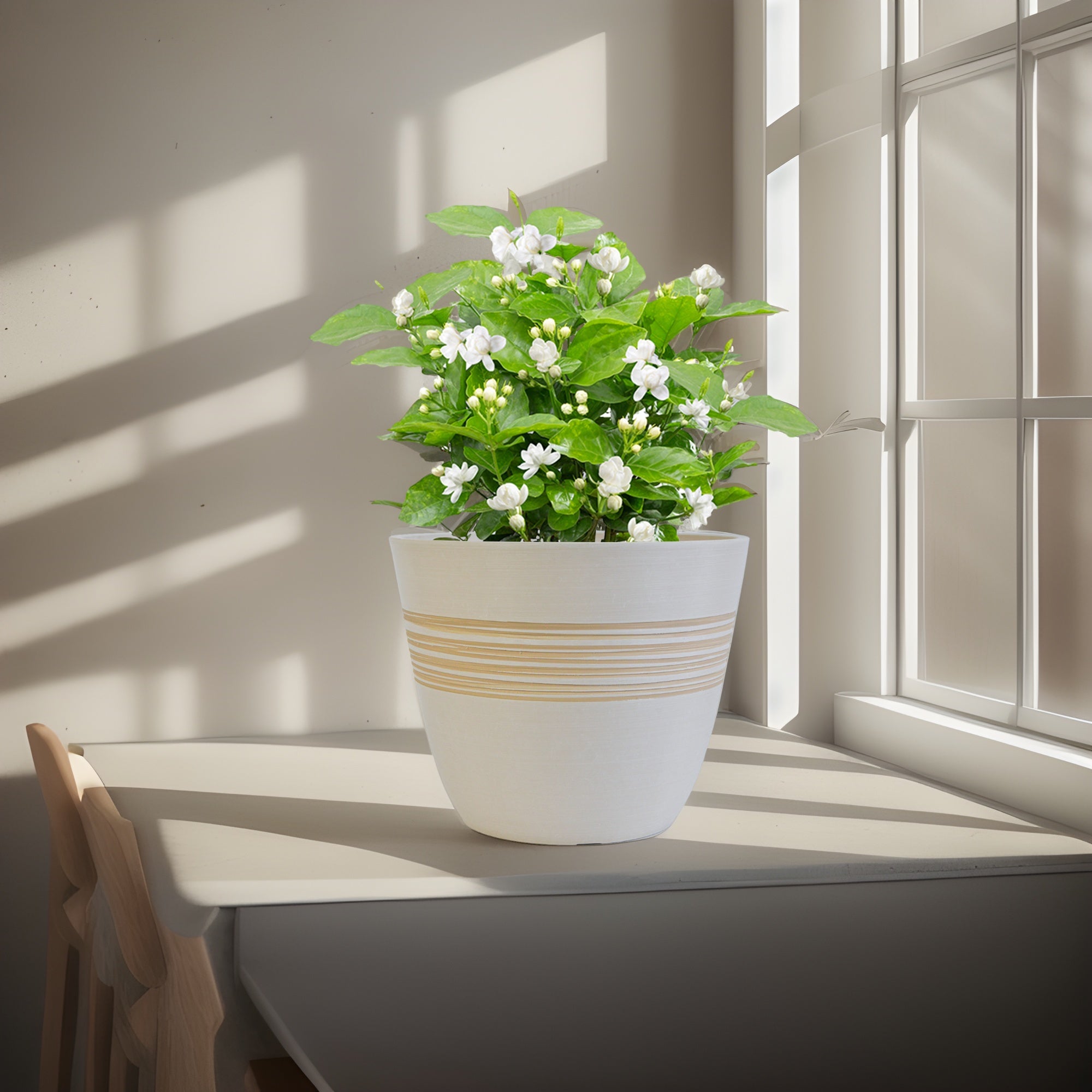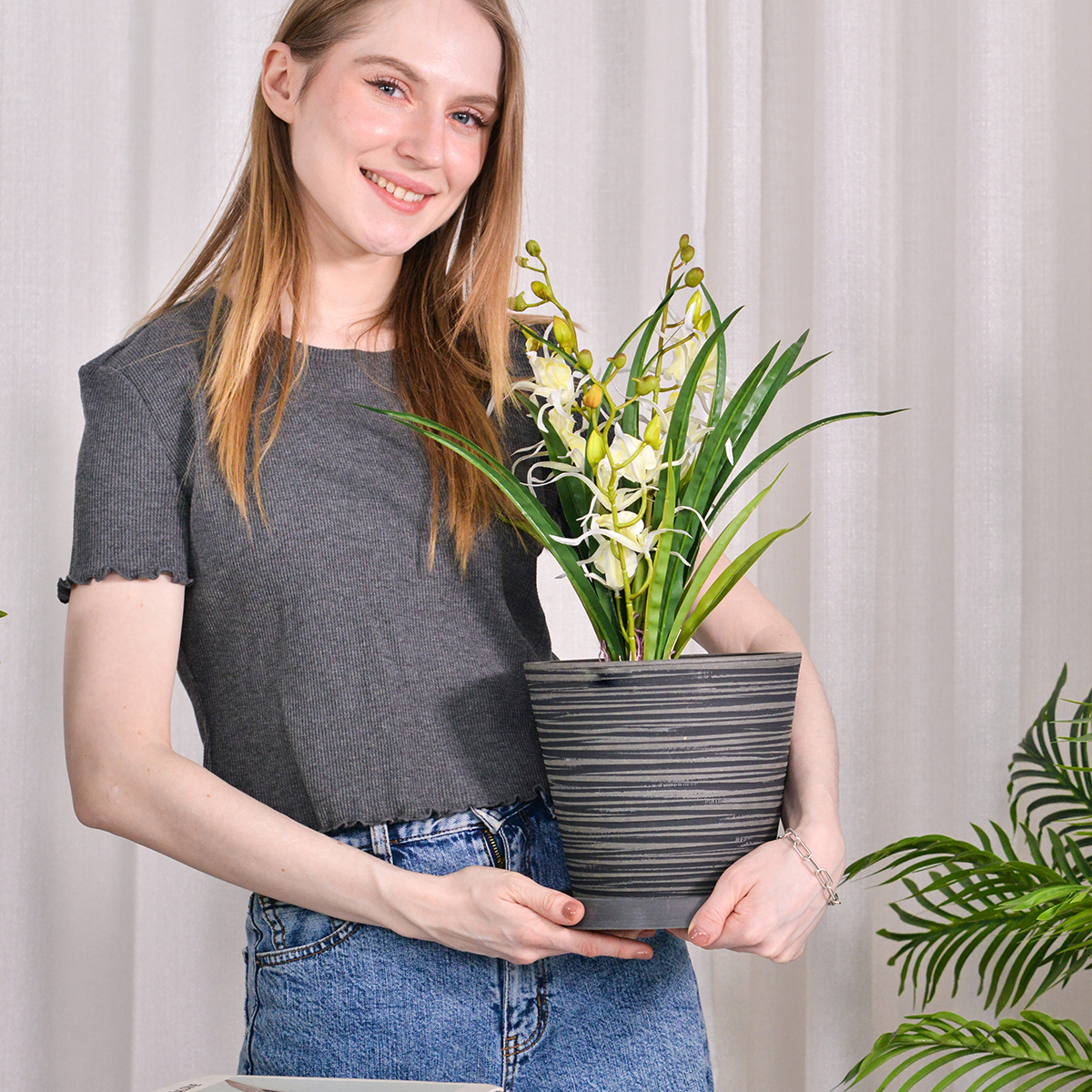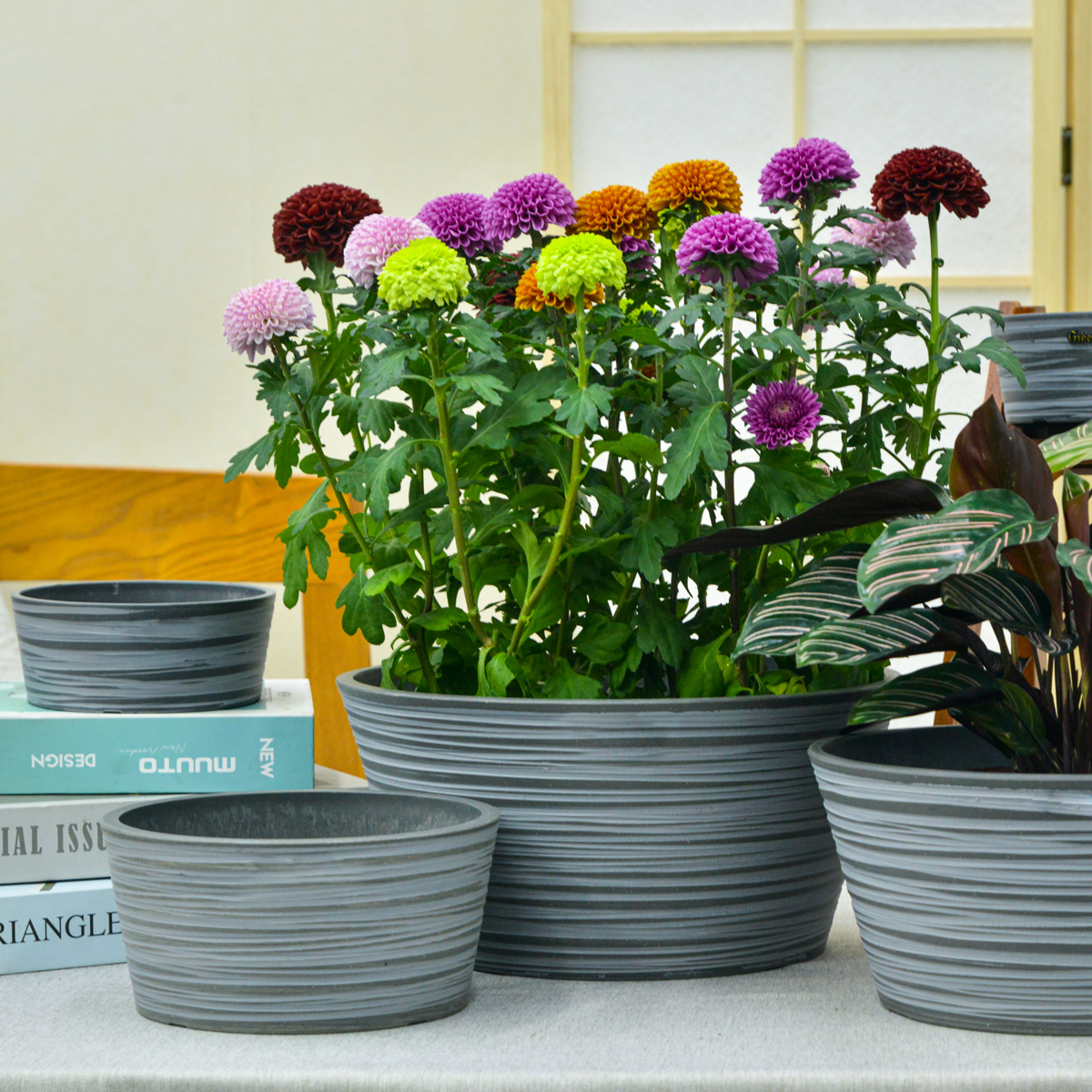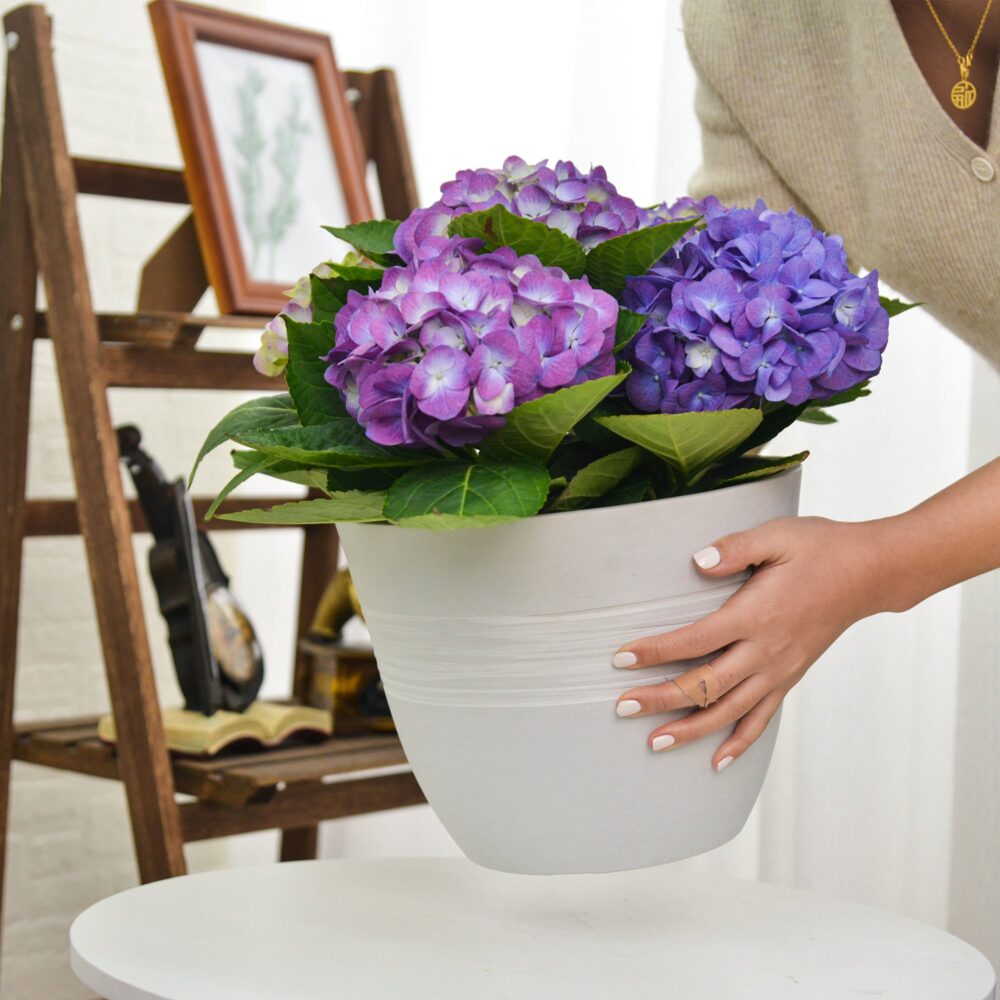Bamboo Indoors: The Ultimate Guide to Growing Elegant Bamboo Plants at Home
Want to bring the serenity of the bamboo forest and a touch of Zen to your indoor space? Bamboo plants can be successfully grown indoors, adding a unique vertical element, lush greenery, and a sense of tranquility to your home. While often associated with outdoor landscapes, certain bamboo varieties are well-suited for indoor cultivation. These graceful and fast-growing plants, belonging to the Poaceae family and prized for their elegant canes and lush foliage, can create a striking and calming atmosphere indoors. This comprehensive guide will provide you with everything you need to know to grow bamboo indoors, from selecting the right types and pots to mastering essential care techniques for thriving indoor bamboo.
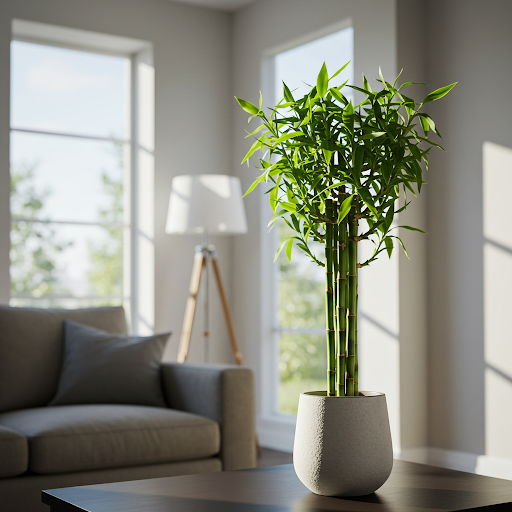
Bamboo plants
Can Bamboo Be Grown Indoors?
Yes, certain types of bamboo can be grown indoors and make beautiful and relatively low-maintenance houseplants. The key to success is choosing bamboo varieties that are naturally smaller, shade-tolerant, and adaptable to container growing. While you won’t be growing towering bamboo groves indoors, you can definitely cultivate elegant and visually appealing bamboo plants in pots within your home.
Ideal Indoor Growing Conditions for Bamboo:
- Bamboo Types for Indoors: Select clumping bamboo varieties for indoor growing. Clumping bamboos are less invasive than running bamboos and are better behaved in containers. Avoid running bamboo indoors, as they spread aggressively and are very difficult to contain in pots. Good choices for indoor bamboo include:
- Bambusa ventricosa (Buddha Belly Bamboo): Dwarf clumping variety, distinctive swollen internodes, tolerates indoor conditions well.
- Bambusa multiplex ‘Alphonse Karr’: Clumping, golden canes with green stripes, relatively compact.
- Fargesia rufa (Green Panda Bamboo): Clumping, very cold-hardy (if you want to move it outdoors seasonally), graceful arching habit, tolerates shade.
- Pleioblastus shibuyanus ‘Tsuboi’: Dwarf clumping, variegated foliage, good for smaller spaces.
- Pseudosasa japonica (Arrow Bamboo): Technically a running bamboo, but less aggressive than many, can be contained in large pots with root barrier, bolder foliage. Use with caution and containment.
- Light: Bamboo prefers bright, indirect light indoors. While some varieties can tolerate lower light conditions, brighter light will promote better growth and more vibrant foliage. Avoid direct, intense sunlight, which can scorch the leaves, especially through glass. East or north-facing windows are generally suitable. If using south or west-facing windows, diffuse the light with sheer curtains.
- Soil: Bamboo needs well-draining, fertile soil. Use a high-quality potting mix that is rich in organic matter and provides good drainage. You can use a general-purpose potting mix amended with compost, perlite, and vermiculite to improve drainage and aeration. Bamboo prefers slightly acidic to neutral soil pH.
- Watering: Bamboo prefers consistent moisture, especially when actively growing. Water thoroughly when the top inch of soil feels slightly dry to the touch. Ensure good drainage to prevent soggy soil and root rot. Indoor pots may dry out faster, so check soil moisture regularly. Avoid letting the soil completely dry out, especially during warmer months. Reduce watering slightly in winter when growth slows.
- Temperature: Bamboo prefers moderate temperatures. Average room temperatures between 60°F to 75°F (15°C to 24°C) are ideal. They are comfortable in typical household temperatures. Avoid extreme temperature fluctuations and drafts.
- Humidity: Bamboo prefers higher humidity, mimicking their natural tropical and subtropical habitats. Aim for humidity levels of 50% or higher. Increase humidity by misting the foliage regularly, using a humidifier, grouping plants together, or placing the pot on a pebble tray filled with water. Brown leaf tips can indicate low humidity.
Planting Bamboo Indoors:
- Starting from Potted Bamboo or Divisions: The easiest way to start growing bamboo indoors is to purchase potted clumping bamboo from nurseries, garden centers, or online retailers specializing in bamboo. You can also propagate clumping bamboo by division when repotting mature plants.
- Repotting: When you bring a new potted bamboo home, it may be beneficial to repot it into a more decorative or appropriately sized container with fresh potting mix, especially if it appears root-bound or is in a small, flimsy pot. Repot in spring or early summer.
- Division during Repotting: Mature clumping bamboo can be divided when repotting to create new plants. Gently separate rhizomes (underground stems) ensuring each division has roots and shoots.
Choosing the Right Pots for Indoor Bamboo:
- Suitable Pot Types: Select tall, sturdy, and heavy pots to accommodate the vertical growth of bamboo and provide stability. Terracotta, ceramic, concrete, or durable plastic pots are all suitable. Tall pots are important to support the upright canes. Heavy pots are crucial as bamboo can become top-heavy as it grows.
- Drainage: Good drainage is essential for bamboo to prevent root rot. Ensure your chosen pot has drainage holesat the bottom. You can also add a layer of gravel or pot shards at the base of the pot to improve drainage.
- Pot Size: Choose a pot that is appropriately sized for the mature size of the dwarf clumping bamboo variety you select. Start with a pot that is at least 12-18 inches in diameter and depth for young plants. Mature dwarf varieties may need pots 20-24 inches or larger in diameter and depth. Larger pots are generally better as they provide more root space, stability, and help retain moisture.
- Potting Mix: Use a well-draining, fertile potting mix as described earlier.
Essential Care Tips for Thriving Indoor Bamboo:
- Watering Schedule: Maintain consistent soil moisture, watering when the top inch of soil feels slightly dry. Water thoroughly and ensure good drainage. Adjust watering frequency based on the season, temperature, and humidity of your home.
- Fertilizing for Healthy Growth: Bamboo benefits from regular fertilization during the growing season (spring and summer). Fertilize every 4-6 weeks with a balanced liquid fertilizer or a fertilizer formulated for bamboo or grasses. Follow package instructions for dilution and application. Reduce or stop fertilizing during the fall and winter dormant period.
- Pruning and Shaping: Prune indoor bamboo to maintain its desired shape and size, and to remove any dead, damaged, or yellowing canes. Pruning can be done at any time of year. You can thin out canes at the base to improve air circulation and light penetration. You can also trim the tops of canes to control height.
- Leaf Cleaning: Dust can accumulate on the leaves, hindering photosynthesis. Wipe the leaves with a damp cloth regularly to keep them clean and glossy.
- Repotting Schedule: Repot bamboo every 2-3 years or when it becomes root-bound. Repotting is also a good time to divide clumping bamboo if desired.
- Pest and Disease Control: Monitor indoor bamboo for pests like spider mites, aphids, and mealybugs. Good air circulation and proper watering can help prevent many issues. Treat any pest infestations promptly with insecticidal soap or neem oil. Root rot can occur if the plant is overwatered or drainage is poor.
Popular Indoor Bamboo Varieties (Clumping Types Recommended):
- Bambusa ventricosa (Buddha Belly Bamboo): Dwarf, distinctive swollen canes.
- Bambusa multiplex ‘Alphonse Karr’: Golden striped canes.
- Fargesia rufa (Green Panda Bamboo): Cold-hardy, shade-tolerant, graceful.
- Pleioblastus shibuyanus ‘Tsuboi’: Variegated foliage, dwarf.
- Pseudosasa japonica (Arrow Bamboo): Bolder foliage, use with caution due to slightly running nature.
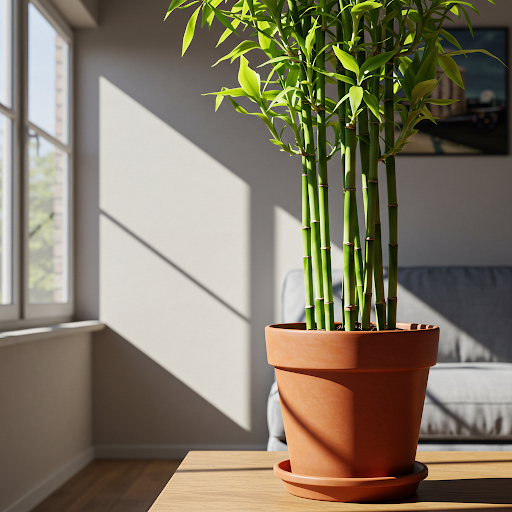
Bamboo plants
In Summary:
Growing bamboo indoors can bring a touch of natural elegance and a tranquil atmosphere to your home. By selecting clumping bamboo varieties, providing bright, indirect light, well-draining soil, consistent moisture, high humidity, and tall, sturdy pots, you can successfully cultivate beautiful and thriving bamboo plants indoors and enjoy their graceful presence year-round.
For more detailed botanical information and to explore the vast world of bamboo species, you can visit the Wikipedia page on Bamboo.
Important Note: Bamboo is generally considered non-toxic to humans and pets. However, it’s always best to prevent ingestion of any plant material. Also, be mindful of the mature size of the bamboo variety you choose, even dwarf types can grow to a significant height over time and require adequate space and pot stability indoors.
Planter for Indoor Outdoor Plants, Set of 2 Modern Decorative Plant Pots with Drainage Hole, Decorative Flower Pots
By greenship-seo|2025-04-10T07:46:01+00:00January 9, 2025|Categories: Hand-carving Series|Tags: Decorative Flower Pots, Self-Watering Pots|
K2-11T
By greenship|2024-08-13T04:21:25+00:00August 13, 2024|Categories: Hand-carving Series|
11THD
By greenship|2024-08-13T02:52:20+00:00August 13, 2024|Categories: Hand-carving Series|
KC2-11V
By greenship|2024-08-16T05:39:50+00:00August 16, 2024|Categories: Hand-carving Series|
Planter for Indoor Outdoor Plants, Set of 2 Modern Decorative Plant Pots with Drainage Hole, Decorative Flower Pots
By greenship-seo|2025-01-14T12:26:44+00:00January 14, 2025|Categories: Hand-carving Series|Tags: Decorative Flower Pots|
KC3-14A
By greenship|2024-08-16T06:26:30+00:00August 16, 2024|Categories: Hand-carving Series|

